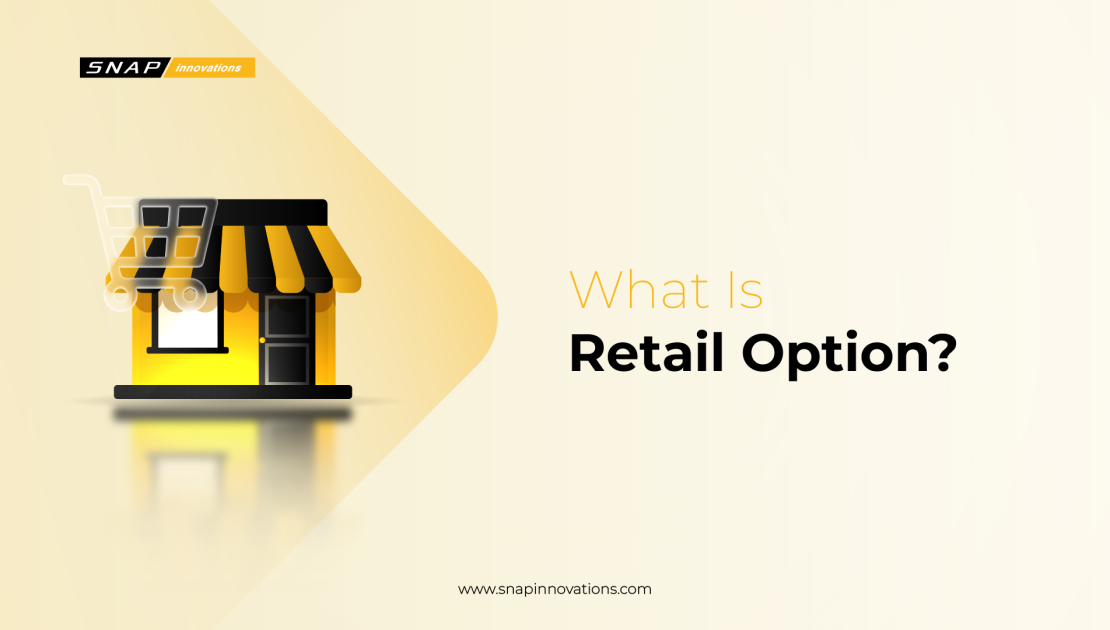The retail sector has always been a dynamic and evolving industry, adapting to technological advancements, changing consumer behaviors, and economic shifts. Today, retailers face a landscape more complex and competitive than ever before. This complexity is not without its opportunities, however. With a plethora of retail options available, businesses can tailor their strategies to meet specific market demands, leverage new sales channels, and enhance customer experiences.
Understanding the vast array of retail options is crucial for success in today’s market. This article aims to provide retailers with comprehensive insights into the different retail models, technological innovations, customer engagement strategies, inventory management, and the challenges and opportunities within the industry. Whether you’re a small boutique or a large chain, the right blend of retail options can pave the way for increased sales, customer loyalty, and long-term success.
Understanding Different Retail Models
In today’s rapidly evolving marketplace, selecting the right retail model is paramount to a business’s success. Retailers must navigate a landscape shaped by changing consumer preferences, technological advancements, and global economic trends. This section delves into the primary retail models, showcasing examples of successful businesses and highlighting the importance of choosing a model aligned with comprehensive market analysis.
1. Traditional Brick-and-Mortar
The traditional brick-and-mortar model stands as a testament to the enduring appeal of physical retail experiences. Despite the surge in online shopping, physical stores offer unique advantages, including the ability to provide hands-on customer service and immediate product accessibility. Nordstrom, for example, has excelled by focusing on high-quality customer service, creating an inviting store atmosphere, and offering exclusive in-store experiences that cannot be replicated online.
2. E-commerce Solutions
E-commerce has transformed the retail industry, offering convenience and a wide selection of products at the click of a button. Amazon is the quintessential success story in this domain, growing from an online bookstore to a global e-commerce and cloud computing giant. The key to its success lies in a vast product range, competitive pricing, personalized recommendations, and innovative technologies like Amazon Prime for fast shipping.
Read More: What is EMS & OMS? Streamlining Trading Operations
3. Hybrid Models: Combining Online and Offline Strategies
Hybrid models merge the tactile allure of physical stores with the convenience of online shopping, offering consumers a flexible and integrated shopping experience. Apple excels in this approach, seamlessly blending its online presence with iconic physical stores. Customers can research products online, test them in-store, and choose between immediate in-store purchases or online orders with fast delivery. This coherence between channels enhances customer satisfaction and loyalty.
The Importance of Choosing the Right Model Based on Target Market Analysis
 Selecting the most appropriate retail model requires a deep understanding of the target market. This analysis should consider customer demographics, buying behaviors, preferred shopping channels, and the competitive landscape. For instance, a luxury brand might thrive in a brick-and-mortar setting that emphasizes personal service and a high-end shopping experience, while a tech-focused business might benefit more from a hybrid model that leverages online marketing to drive in-store traffic.
Selecting the most appropriate retail model requires a deep understanding of the target market. This analysis should consider customer demographics, buying behaviors, preferred shopping channels, and the competitive landscape. For instance, a luxury brand might thrive in a brick-and-mortar setting that emphasizes personal service and a high-end shopping experience, while a tech-focused business might benefit more from a hybrid model that leverages online marketing to drive in-store traffic.
A thorough market analysis can identify gaps and opportunities in the retail landscape, guiding businesses in customizing their approach to meet the specific needs and preferences of their target audience. By aligning the retail model with customer expectations, retailers can enhance engagement, increase sales, and build a loyal customer base.
The Impact of Social Media on Retail
Social media has fundamentally transformed the retail landscape, offering new avenues for brands to engage with consumers, enhance their visibility, and drive sales. This section explores how social media platforms have become indispensable tools for retailers aiming to thrive in the digital age.
1. Boosting Brand Visibility and Engagement
Social media platforms like Instagram, Facebook, and Pinterest have become powerful channels for retailers to increase brand visibility and engage directly with consumers. Through creative content, live streams, and interactive posts, retailers can create immersive brand experiences that captivate audiences.
For example, fashion retailer Zara excels on Instagram by showcasing its latest collections through visually striking imagery and engaging stories, effectively turning viewers into buyers. This direct engagement not only boosts brand visibility but also fosters a sense of community and loyalty among customers.
Moreover, social media enables retailers to leverage user-generated content, such as customer reviews and product-centric posts by influencers, to build trust and authenticity. This peer-to-peer endorsement can significantly influence purchasing decisions, as seen with the success of beauty brand Glossier.
By prioritizing customer feedback and highlighting real user experiences on its social platforms, Glossier has cultivated a devoted fan base that actively promotes its products.
2. Driving Sales Through Social Commerce
The integration of shopping features into social media platforms, known as social commerce, has opened up new sales channels for retailers. Customers can now discover, research, and purchase products without ever leaving their favorite social media apps. This seamless shopping experience caters to the convenience sought by modern consumers, significantly shortening the path to purchase.
Retail giants like Nike have adeptly utilized social commerce to launch exclusive products and offer personalized shopping experiences on platforms like Instagram and Snapchat. By creating shoppable posts and utilizing augmented reality (AR) filters for virtual product try-ons, Nike has not only increased its online sales but also enhanced customer engagement.
Additionally, small businesses and artisans have found social commerce to be a game-changer, enabling them to reach wider audiences with minimal investment. Platforms like Instagram Shopping and Facebook Marketplace have democratized access to retail, allowing these smaller players to compete more effectively in the global marketplace.
Technological Innovations Shaping Retail
 The integration of technology into retail operations has opened up new avenues for enhancing customer experiences, streamlining operations, and increasing sales. Here are some of the key technological innovations transforming the retail industry:
The integration of technology into retail operations has opened up new avenues for enhancing customer experiences, streamlining operations, and increasing sales. Here are some of the key technological innovations transforming the retail industry:
Artificial Intelligence (AI) and Machine Learning (ML) are at the forefront of retail innovation, offering tools for personalization, inventory management, and customer service. AI can analyze customer data to provide personalized shopping experiences, recommend products, and optimize pricing strategies. Machine learning algorithms help in forecasting demand, managing stock levels, and identifying trends, enabling retailers to make informed decisions.
An effective e-commerce platform is vital for online retail success. These platforms not only need to be user-friendly and visually appealing but also optimized for search engines and mobile devices. Features like secure payment gateways, efficient shopping cart systems, and integrated customer support can significantly enhance the online shopping experience.
Mobile commerce has seen explosive growth, with consumers increasingly turning to smartphones for shopping. Retailers are responding by developing mobile apps and optimizing their websites for mobile devices. These apps can offer features like loyalty rewards, augmented reality (AR) to try products virtually, and push notifications for personalized promotions, further engaging customers and driving sales.
Maximizing Customer Engagement and Loyalty
In the competitive retail landscape, engaging customers and fostering loyalty are more important than ever. Here are strategies retailers can implement to enhance customer engagement and encourage repeat business:
Personalization is key to winning customer hearts and minds. By leveraging data analytics and AI, retailers can offer personalized shopping experiences, product recommendations, and marketing messages. Tailoring the shopping experience to individual customer preferences and behaviors can significantly boost customer satisfaction and loyalty.
Loyalty programs are an effective tool for encouraging repeat business and building a loyal customer base. These programs can offer rewards, exclusive discounts, and special offers to frequent shoppers. Effective loyalty programs not only incentivize purchases but also collect valuable customer data that can be used to further personalize the shopping experience.
An omnichannel approach ensures a seamless customer experience across all platforms and touchpoints, from brick-and-mortar stores to online shops and social media channels. By providing a consistent brand message and shopping experience, retailers can effectively engage customers wherever they are. Integrating sales channels allows for more effective data collection, enabling even greater personalization and targeted marketing efforts.
Inventory Management and Supply Chain Optimization
 Efficient inventory management and a streamlined supply chain are critical for retail success, affecting everything from customer satisfaction to profit margins. Here are key strategies for optimizing these areas:
Efficient inventory management and a streamlined supply chain are critical for retail success, affecting everything from customer satisfaction to profit margins. Here are key strategies for optimizing these areas:
Advanced data analytics can significantly improve inventory management, allowing retailers to predict demand, reduce overstock, and minimize stockouts. By analyzing sales data, customer trends, and seasonal fluctuations, retailers can optimize their inventory levels, ensuring they have the right products at the right time.
A robust supply chain strategy is essential for maintaining inventory levels and ensuring timely product delivery. This includes choosing reliable suppliers, optimizing logistics and distribution networks, and leveraging technology for supply chain visibility. Retailers can also explore sustainable supply chain practices to reduce environmental impact and meet consumer expectations for ethical sourcing.
Navigating Challenges in Retail
The retail sector faces numerous challenges, from fierce competition to rapidly changing consumer preferences. Understanding these challenges and developing strategies to overcome them is crucial for retailers aiming to thrive.
Competitive Analysis
Staying ahead in a competitive market requires a deep understanding of both direct and indirect competitors. Retailers should conduct regular competitive analyses to benchmark pricing, product offerings, customer service, and marketing strategies. This insight can help identify unique value propositions and areas for improvement.
Adapting to Consumer Trends and Demands
Consumer behavior is constantly evolving, influenced by technological advancements, social trends, and economic factors. Retailers must stay agile, adapting their offerings and operations to meet changing consumer expectations. This includes embracing sustainability, offering flexible shopping options (like online ordering and curbside pickup), and continuously innovating the customer experience.
The Future of Payments in Retail
As the retail landscape evolves, so too does the way consumers prefer to pay for their purchases. The future of payments in retail is rapidly shifting towards more convenient, secure, and innovative methods, influencing shopping behaviors and retailer strategies.
1. Contactless and Mobile Payments: The Rise of Digital Payment Options
The adoption of contactless and mobile payments has surged, driven by the demand for faster, safer, and more convenient payment methods. These technologies allow consumers to make purchases using smartphones, smartwatches, and contactless cards, minimizing physical contact and speeding up the transaction process.
Retailers like Starbucks have pioneered mobile payment solutions, with their app-based ordering and payment system becoming one of the most successful in the world. This shift towards digital payments not only enhances the customer experience but also streamlines operations and reduces transaction times.
Read Next: What is Credit Trading? Navigating the Fixed Income Markets
2. Cryptocurrency and Blockchain in Retail: Exploring the Potential Future Role
Although still in its early stages, the integration of cryptocurrency and blockchain technology in retail transactions presents exciting possibilities for the future. Cryptocurrencies offer an alternative payment method that is secure, transparent, and can reduce transaction fees.
Blockchain technology can further revolutionize the retail sector by providing a decentralized ledger for secure and transparent transactions, supply chain management, and authenticity verification. Some forward-thinking companies, like Overstock.com, have begun accepting cryptocurrencies, paving the way for wider adoption in the retail industry. As consumer familiarity and trust in these technologies grow, we may see a significant shift in how transactions are conducted in the retail sector.
Conclusion: The Future of Retail
The retail industry is undergoing significant transformation, driven by technological innovation, changing consumer behaviors, and a competitive global market. Retailers who embrace these changes, adapting their strategies to leverage new retail options and technologies, will be best positioned for success. The future of retail is dynamic and promising for those ready to explore and adopt varied retail options, from e-commerce platforms to hybrid models and beyond.
Success in retail requires a commitment to understanding and meeting customer needs, optimizing operations, and staying ahead of industry trends. By focusing on customer engagement, inventory management, and embracing technological innovations, retailers can navigate the challenges and seize the opportunities that lie ahead.

